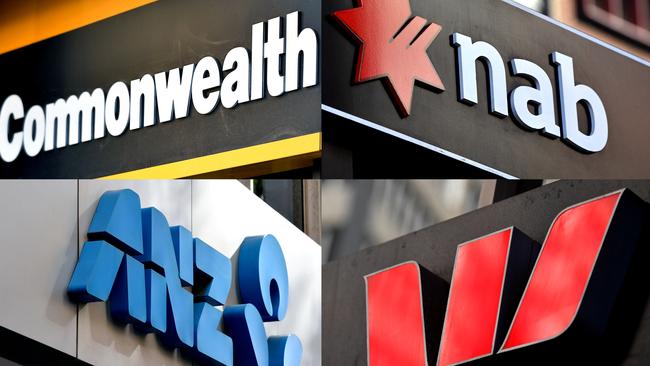Bank stress tests no match for coronavirus crisis
The economic collapse sparked by the coronavirus may outstrip the ‘most severe’ stress test scenarios foisted on banks.

The economic collapse sparked by the coronavirus pandemic may outstrip the “most severe” stress test scenarios foisted on the banking system by the prudential regulator and those run by the major lenders’ own internal risk teams.
The spiralling crisis has sent the banking sector back to the drawing board to model the impact of the economic crisis on capital levels, balance sheet impairments and the rate of defaulting borrowers, as the scenarios the lenders subjected their mortgage portfolios come to fruition — and in some cases are surpassed.
Economists are forecasting unemployment to spike at between 10 per cent and 15 per cent this year as the government shuts down key industries to limit the further spread of COVID-19.
This is expected to spark a contraction in the economy by up to 10 per cent over the three months to the end of June, and contribute to an annual fall in GDP of more than 6 per cent.
The Australian Prudential Regulation Authority last year pushed the banking sector through a stress test — regulatory exams that measure how banks would fare in a range of unfavourable economic circumstances — that was the first test since 2017.
The results of the 2019 test were just about to be finalised and published, but APRA’s stress test team was diverted onto more pressing COVID-19 issues.
While the scenarios used in last year’s test remain confidential until publication, APRA’s 2017 stress test measured the resilience of a dozen major banks and second-tier lenders against a hypothetical “China-led recession in Australia and New Zealand”, which assumed a 4 per cent slide in annual economic growth, a peak unemployment rate of 11 per cent and a cumulative 35 per cent house price decline over a three-year period.
The current coronavirus crisis is expected to hit the Australian economy far quicker, and the Organisation for Economic co-operation and Development has warned a three-month shutdown “with no offsetting factors” could reduce GDP by up to 6 per cent.
Respected economist Saul Eslake expects the economy to contract by up to 5 per cent this year, while Westpac chief economist Bill Evans forecast unemployment to race to 11 per cent and annual GDP to shrink 3 per cent. National Australia Bank economist Alan Oster forecasts a 12 per cent jobless rate, and AMP Capital’s Shane Oliver figures it could reach 15 per cent this year.
UBS economist George Tharenou said even with the government’s $130bn wage subsidy plan, the economy would plunge 10 per cent in the June quarter and shrink more than 6 per cent over the year.
A comparison of major bank internal stress tests shows the big four banks run their mortgage portfolios, worth a collective $1.6 trillion, on slightly more benign scenarios. One source at a major bank said the lender was developing “stress parameters” this year that “will be harsher than last year’s”.
“Once you are in a stressed environment the next stress test will be to outcomes much lower/worse than the previous set,” the industry source said.
“We also need to consider the government and regulatory responses which are designed to alleviate some of the impact. As you would expect, we are doing a range of modelling and testing around these current issues.”
According to regulatory disclosures, Commonwealth Bank uses a “severe stress test scenario” modelled on an ongoing basis that includes an 11 per cent unemployment rate peak and house price falls of 31 per cent.
Westpac’s own internal stress tests measure the bank’s mortgage portfolio against a 3.9 per cent fall in GDP, and a jobless rate peak of 11.6 per cent, in a three-year scenario that is most severe during the first year of the crisis.
On the other hand, National Australia Bank tests itself against a scenario where GDP contracts most severely in the second year of the crisis, shrinking by 3.1 per cent, while unemployment increases to a peak of 10.2 per cent in the third year.
ANZ models a scenario where GDP growth falls to zero in the first year, before sliding as much as 4.7 per cent in the second year, with the unemployment rate not hitting its peak of 10.5 per cent until the third year.
While these scenarios focus on mortgage portfolios — which account for the majority of the major banks’ assets — the lenders also conduct a range of other stress tests across the entire operations, such as CBA’s expected credit loss scenario, which is modelled on the worst experience in a 30-year economic cycle, including “a breakdown in typical economic relationships reflected by significant declines in GDP per capita, investment, house prices and the sharemarket, as well as increases in unemployment, interest rates and exchange rates”.
The Bank of England last week junked plans to run a stress test on the banking sector, urging banks to focus on the emergency at hand. But the US Federal Reserve is currently conducting a test up until April 6, imagining the US economy shrinks 10 per cent, unemployment hits 6 per cent, and the Dow Jones Industrial Average plunges to 18,623 points by the end of June.
Those tests appear benign in the current environment, in which Goldman Sachs has forecast US GDP to dive 24 per cent over the June quarter and Treasury Secretary Steven Mnuchin warned the jobless rate could hit 20 per cent.


